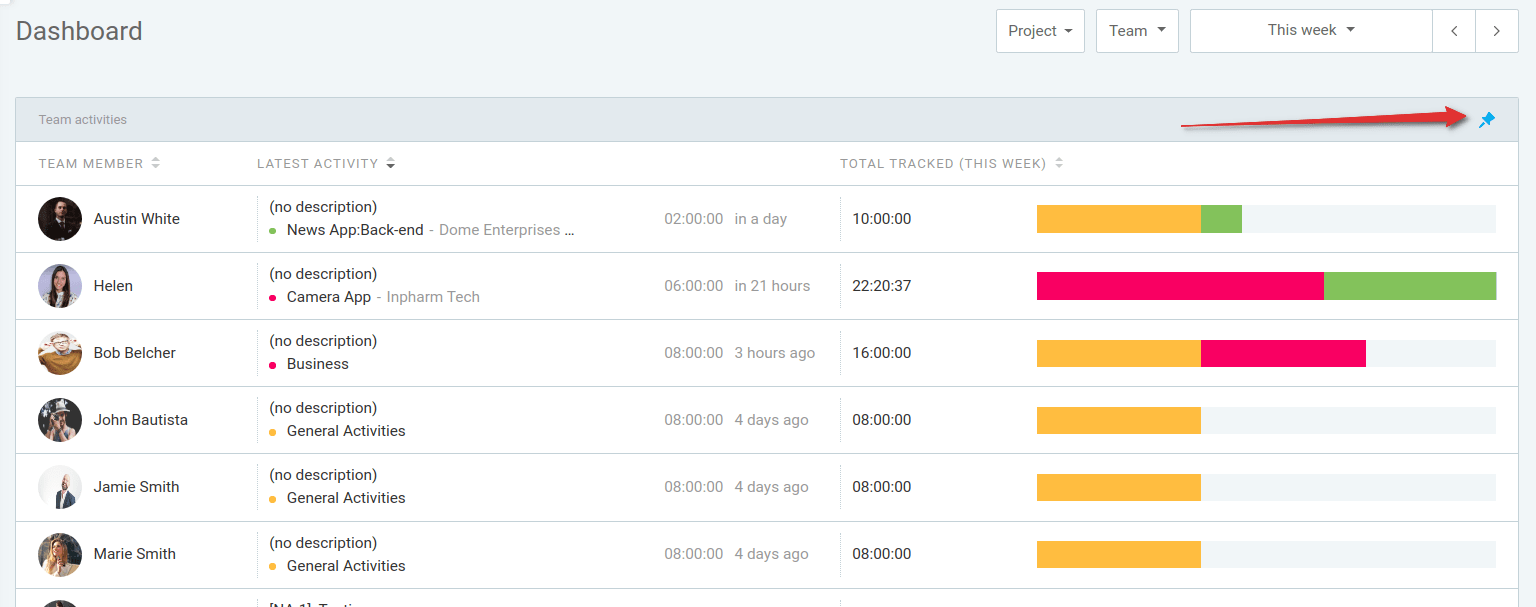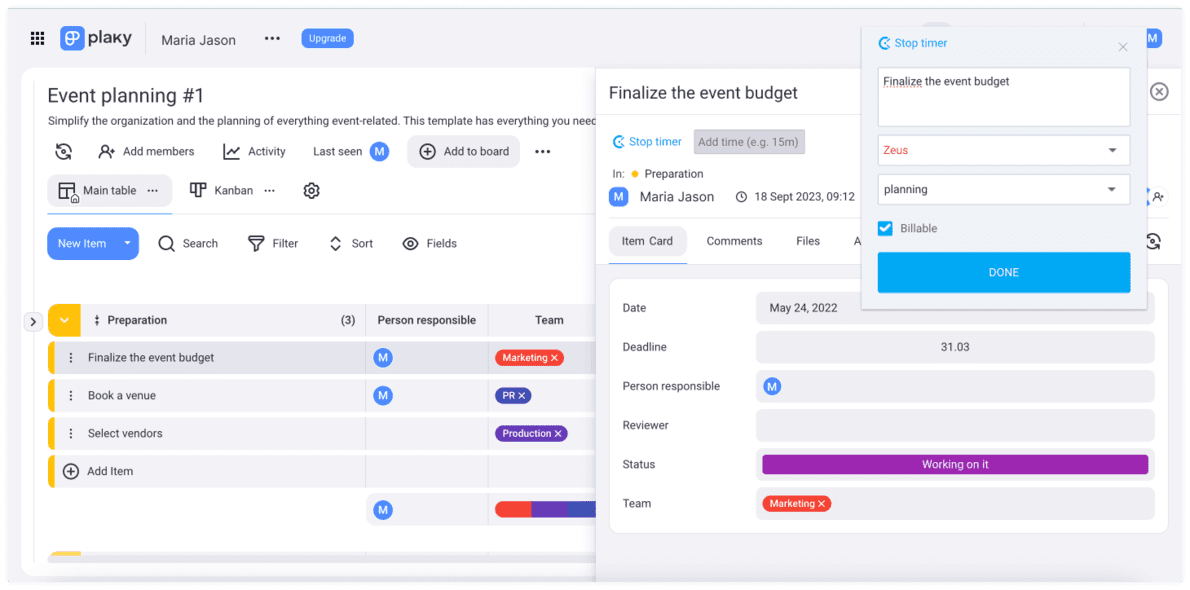Team productivity measures how much quality work a team can produce over a given time, such as a month. Whether a team will be productive depends on a range of factors, like the productivity levels of each employee, as well as their skills. In addition, team communication, work environment, and levels of motivation also have a profound impact on team productivity.
In this article, we’ll cover some practical methods you can use to track the productivity of your team. Moreover, we’ll share with you several real examples of how particular teams measure their effectiveness.
The true meaning of productivity for your team
Even though team productivity is usually measured by assessing the ratio between the number of tasks and the time and effort your team puts into completing them, productivity parameters might differ across teams.
That’s why, if you’re an employer or a manager, think about the key productivity parameters for your company or team. Here are some questions you can ask yourself:
- What products or services does your company offer?
- What type of performance can you tag as productive?
- Is there a sales or production quota that a team has to meet?
- What are the most important goals in each team?
Once you figure out the crucial metrics that help build a productive team, it’ll be easier to track team effectiveness. By tracking team productivity, managers will better understand whether there are some less effective employees in a team. In that case, leaders should find a proper solution for these workers, which can include:
- Providing workers with additional training,
- Transferring employees to another team, or
- Employee’s termination.
Eight methods of tracking team productivity
One of the ways to measure team capacity is to use productivity metrics. Here are some of the most common metrics for monitoring productivity.
Planned to done ratios
The planned to done ratio metric takes into account the percentage of tasks that were finished compared to those that were assigned. So, when using this method, you are reviewing a given list of tasks and analyzing how many of these assignments the team has completed. That way, you can learn more about the team’s ability to complete the workload accurately.
You can use the planned to done ratio when working in sprints. In this case, at the beginning of a sprint, you should document how much work the team plans to do during a sprint. Then, at the end of a sprint, you should compare how much work a team has finished vs. the workload that was planned at the beginning.
Speaking of sprints, it’s worth noting that the planned to done ratio is quite beneficial for teams and product owners. This metric shows how committed team members are to work, as well as their capacity. So, for instance, a team commits to 30 PBI (Product Backlog Item – “a single element of work”), and delivers only 10. This means that the sprint wasn’t successful, because only around 30% of the tasks were completed.
Now, we’ll go through another example of the planned to done ratios, to show you the difference between high and low ratios. Let’s say a team has to finish 20 tasks in a month. If team members manage to carry out 18 tasks over a given time, their planned to done ratio is 90%, which is great. On the other hand, if team members manage to complete only 10 tasks after this period, the planned to done ratio is 50%, which is low.
What to do when the ratio is lower than it should be? Team leaders have several options:
- Hiring more team members to finish all the work on time.
- Decreasing the amount of work the team has to finish per month.
- Revising the planning process and making adjustments.
Having a low planned to done ratio means that a planning process is not effective or that team members don’t have suitable skills to perform the tasks.
Cycle time
The cycle time metric tracks the average time needed to complete a product or deliver a service. The rules are simple: the shorter cycle time means higher levels of team productivity.
For instance, in a software team, this method covers the amount of time a team needs from a feature’s first commit (starting point) to the last phase, which is deployment. Or, for workers in a call center, cycle time would be from the moment they answer a call to the moment they finish a call.
There’s a simple formula for calculating the cycle time. You have to divide Net Production Time by the number of units made. The Net Production Time (NPT) is the amount of time a team has to finish a product. Be sure that there will be some downtime (time for meetings, lunch breaks, etc.). Subtract these hours from the total time employees spend at work.
For example, in a fast-food restaurant, a team works 9 hours a day. When we subtract downtime, we’ll get 8 hours 15 minutes (495 minutes), which is our NPT. Workers have to make 45 sandwiches during the day.
Cycle time = Net Production Time ÷ the number of units made
Cycle time = 495 ÷ 45
Cycle time = 11
This team has 11 minutes to make one sandwich. Of course, if team members manage to fix a sandwich in 9 minutes (less than the average cycle time), that’ll make them more productive.
One of the benefits of using the cycle time is that team leaders can learn whether the planning process works well. Besides, this metric gives managers a better clue of how team members perform their job and if they’re as effective as they should be.
Escaped defects
This method tracks mistakes the team has made within a given time. Development teams usually use this metric when they want to analyze how many bugs they missed during a project. So, if your dev team is creating an app, the escaped defects metric will help them find errors on time, before your app is available to the public. These mistakes can be either user experience problems, performance issues, or application errors.
There’s also the defect escape rate. You can calculate this rate by reviewing the number of defects the team found during the pre-production phase, then compare this number with the production phase.
So, what do higher and lower defect escape rates mean? A higher rate signals that there’s a problem with the testing processes or with automated testing tools that a team uses. A lower rate is a sign of high-quality software, and that testing processes are functioning well.
Apart from developers, other teams can learn about their productivity with the escaped defects. For instance, if you work in a marketing department, this method can evaluate mistakes such as customer complaints or failed social media paid campaigns.
Revenue-per-employee
The revenue-per-employee metric mostly applies to sales and marketing teams. The purpose of this method is to learn how productive team members are in generating revenue.
When it comes to the revenue-per-employee technique, there’s a formula you have to follow.

You need to divide the overall revenue (produced by the entire team) by the number of team members. So, for example, if there are 40 people in a company and the overall revenue is $5 million per year, the revenue-per-employee will be:
$5.000.000 ÷ 40 = $125.000
Thus, $125.000 per employee per year. If you choose to track team productivity with the revenue-per-employee method, be sure that higher revenue-per-employee implies that your team is more effective.
This metric comes in handy when you want to compare two companies working in the same industry. Thus, to find out what company is more effective, you can evaluate their revenue-per-employee. So, for instance, marketing company A has a revenue of $500.000 and 20 employees. The revenue-per-employee is:
$500.000 ÷ 20 = $25.000
Marketing company B has a revenue of $520.000 and 25 employees. The revenue-per-employee here is:
$520.000 ÷ 25 = $20.800
To conclude, company A is more productive than company B. Even though company B generates slightly more revenue and has more employees, company A has a higher revenue-per-employee.
Time tracker
Apart from these productivity metrics, you can also try a time tracker to measure team effectiveness, regardless of the team type.
Here’s how time recording gives you more insights into team productivity. When team members log their working hours daily, managers are able to review who’s currently doing what tasks and how’s the project going. Some time tracking apps, like Clockify, provide you with a visual breakdown of a team’s week.

Another handy option is the Team dashboard. Here, you can see what projects are the most active. Since each color in the dashboard represents each project, you’ll be able to figure out if your team spends enough or too much time on particular projects during the week. Also, you can review the total hours tracked by the team.

In addition, if you’d like to find out more about individual team members, you can do that by looking at the team activity section, below the chart. Thus, you’ll know exactly how much time each employee has spent on what projects and what he’s currently doing. You can even rearrange these two sections in the Team dashboard so that the team activity shows up at the top of the page. Just click on the “Pin to top” icon, which you can see in the screenshot below.

An example of the team activity section
In the team activity section, you can also filter the data by total tracked time, which comes in handy when you’d like to see who’s tracked the most hours. On the other hand, you can filter by the latest activity, in case you need to find out who’s working at the moment.
Accounting for readjustments in work
When we think about productivity in general, we usually have in mind a perfect workflow without any errors. But, to ensure there aren’t any mistakes, it’s crucial to pay attention to the details and make changes when needed. Moreover, it’s vital to collaborate with other teams in a company.
Suzana Veselinovic is the Quality Assurance Manager at Clockify. She says that, when it comes to the QA team, their work routine often involves many readjustments that team members work on in accordance with the development team. Here’s what Suzana points out as the key signs of team productivity:
“The bug tracking board and how it looks tells us a lot about productivity. If QA columns are ‘clear,’ that means that the tasks were completed effectively. Besides, another good productivity indicator is the quality of a feature that is sent to production.”
Suzana adds that it takes numerous stages of testing, during which they report various bugs, to ensure the quality of features.
Tracking customer satisfaction
Some teams don’t maintain direct contact with customers or clients because of the nature of their job. But, for others, such as customer support teams, keeping a good professional relationship with clients is the most crucial part of the job.
When it comes to the productivity of customer support teams, one way to measure team effectiveness is to check reviews from customers. Therefore, a team can learn more about overall customer satisfaction.
Another practical method of tracking team productivity is to use reporting tools. Jelena Lukic, the Support Agent at Clockify, says that these reports are valuable because they show the number of solved tickets and the number of replies, as well as how fast the team replied. Other than that, here’s what the customer support team uses to measure team productivity:
“We can also review our team rates for the last month. Team rates are calculated according to the number of tickets and the number of good and bad reviews.”
Analyzing the right metrics
As for sales teams, their job tasks usually involve communicating with clients, via emails and meetings. That way, salespeople can properly present products or services to clients.
So, what’s important when tracking team productivity in sales? Nikola Neskovic, the Sales Director at Clockify, says that the most crucial metrics are:
- the number of meetings the team scheduled,
- the number of meetings the team held, and
- the revenue generated from the meetings that were held.
Nikola adds that this revenue depends on the conversions that the team made. For example, when a client switches from a free plan to a paid plan, or from a basic plan to a premium plan.
Use Clockify to track everything that deserves tracking
Your team is as special as any.
However, you can’t use the same metrics for your marketing and developer teams — they have different workloads and types of goals.
Whatever goals you have, you also need to make sure everyone achieves them timely.
To that end, you can use a piece of software like Clockify to break down your goals into smaller, more manageable tasks.
To get more granular, the Reports section of your Clockify lets you see how much your team has earned per task or project.

That way, you’ll better understand what each team member or whole team contributes to your company’s financial bottom line.
But Clockify covers one area of your work.
To increase your productivity further, you can integrate Clockify with a project management tool like Plaky to:
- Prioritize tasks,
- Improve team collaboration,
- Track progress, and
- Hit deadlines faster than ever.

With this integration, Clockify can track your time within Plaky’s tasks. To do that, just click on the Start timer button, and your work hours spent there will be recorded automatically. This prevents you from wasting time and helps you utilize every bit of it.
Productivity isn’t just about tracking work hours. It’s about getting insights into how you can optimize your workflow and make more informed decisions.
Don’t get overwhelmed with complexity. Smarter team productivity management is a click away.


